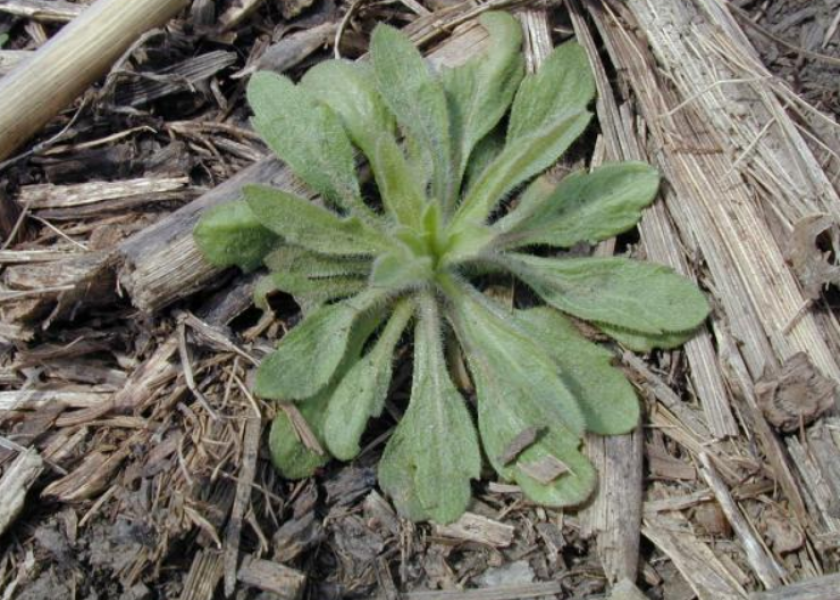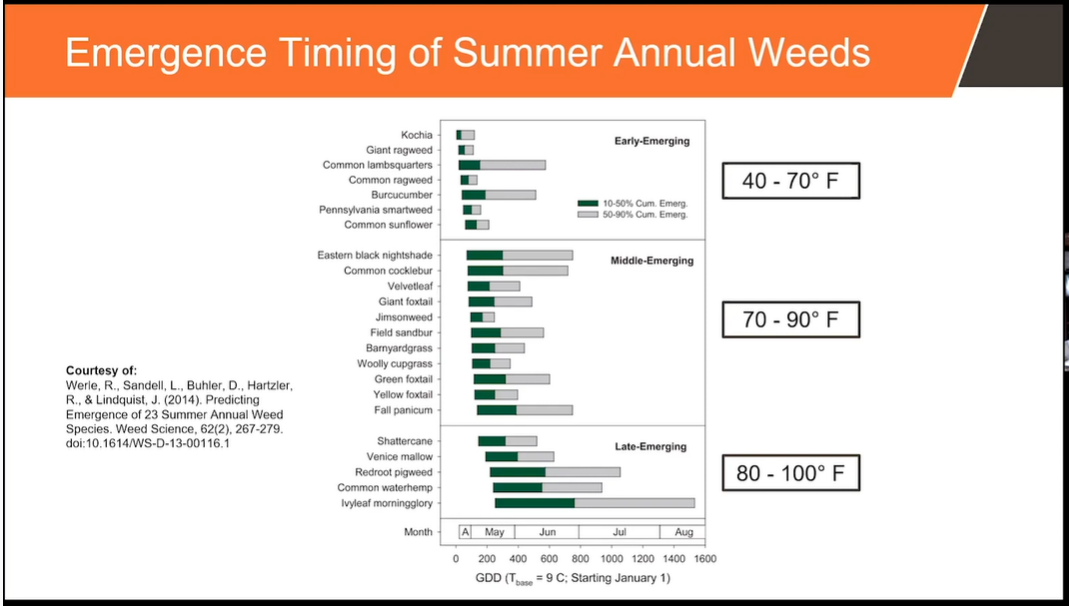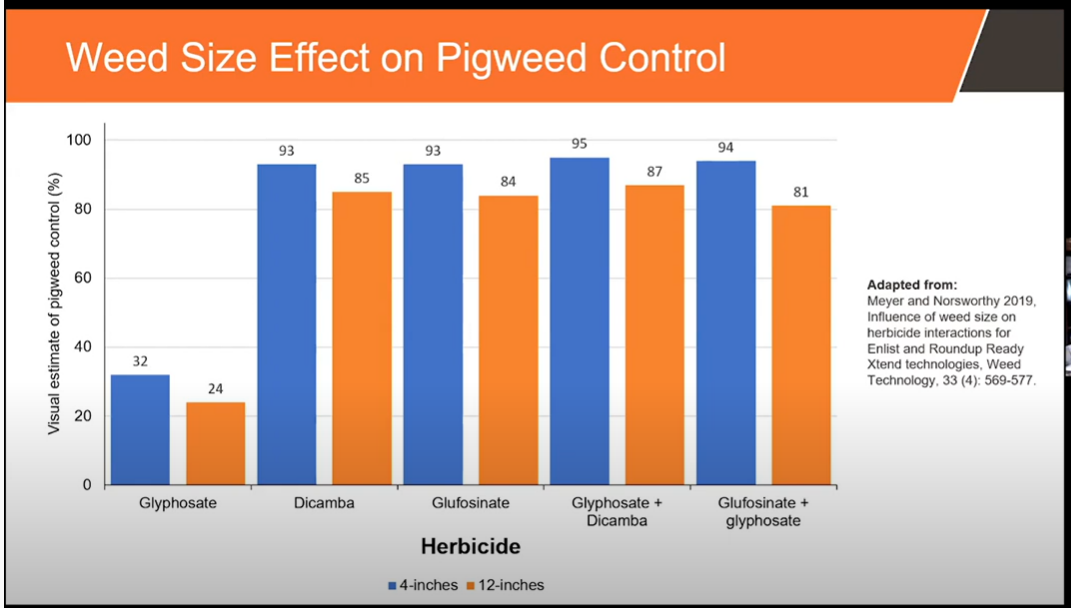Planting Early Season Soybeans? Control These Early Weeds

In the rush to plant early soybeans, beware of weed species you might not normally encounter when planting soybeans during the traditional timeframe for your area.
“You aren’t dealing with Palmer pigweed and waterhemp at this point, for instance, because they emerge later in the growing season,” explains Tommy Butts, University of Arkansas weed scientist.

Such weeds include ragweed species, common lambsquarters, burcucumber, kochia, common sunflower, ryegrass and marestail (horseweed). There may be others, depending on your location.
These early weed species may require you to fine-tune herbicide selection and application timing as well as cultural practices, Butts says.
Keep “driver weeds” like marestail in check. While classified as a winter annual, marestail has two emergence periods – in early spring and again from late summer through late fall. That emergence pattern results in its ability to compete with soybeans all season.
In addition, marestail is highly prolific. A single plant can produce 200,000 seeds, which are small and easily dispersed by wind.
Research at Iowa State University shows marestail can reduce soybean yields by up to 80% if not controlled, according to Prashant Jha, weed scientist.
The challenges with marestail control are exacerbated, Jha adds, because most populations are resistant to glyphosate and ALS inhibitors.
The Extension weed science community recommends a herbicide program for marestail that includes a spring burndown and soil-applied residual herbicides, which can provide control for six to eight weeks.
This strategy can also help you address other broadleaf weeds and grasses that impact early soybeans.
“Italian ryegrass is one here (in the mid-South) that is up early and growing,” Butts notes. “That’s my No. 3 weed problem, behind Palmer pigweed and barnyardgrass in rice. If we don't get a good burndown on Italian ryegrass, it's going to be fighting with our soybean crop all year.
“So again, we have this shift to some of these more biennial/winter annuals that we need to fight and be prepared for when we're selecting herbicides throughout the season,” he adds.
Minor crop injury potential exists. Butts says while pre-emergence herbicides are vital for good weed control, the application timing – usually during cool, wet conditions – can increase the potential for crop injury.
Soybean plants can usually metabolize a herbicide into a nonphytotoxic form quickly, so any damage is superficial.
“It usually causes no yield loss,” Butts says. “The beans might look bad for a week or two, but they will grow out of it and be completely fine.”
Cool, wet conditions may also cause the residual control from pre-emergence herbicide applications to persist. In early soybeans, that can be a positive.
“A lot of times, down here in Arkansas, where we're battling heavy pigweed infestations in soybeans, our residuals might only give us three weeks of activity,” Butts says. “But if we spray soybean fields early, the residual may get extended. We might get four or five weeks of control before we have to overlap the next herbicide. It's very environmentally dependent.”
Post-emergence herbicide treatments require extra care. “You have to scout, really pay attention to those early soybean fields and be mindful of hitting weeds when they’re really 
At the same time you’re tracking weed size, you also must consider the growth stage of the soybeans, advises Ken Ferrie, Farm Journal Field Agronomist, based near Heyworth, Ill.
“If the beans are at a reproductive stage, spraying can cause some flowers to abort, which will cost some of the yield premium you expected to get from early planting,” Ferrie cautions.
Consider benefits from cultural practices. Some can improve weed control and, therefore, early soybean yield outcomes. The use of a pre-post herbicide program is one. Narrow row spacings is another.
“Row width is a big consideration,” Butts says, citing research from the University of Wisconsin. “If we can decrease row width from 30 inches or greater down to 15 inches or less, we can drastically increase our canopy closure speed.”
The Wisconsin research shows higher seeding rates can also speed up canopy closure.
However, Butts encourages farmers to focus instead on establishing a consistent, even stand of soybeans – minus skips and bare spots – which can lessen seed costs and enhance crop competitiveness with weeds







